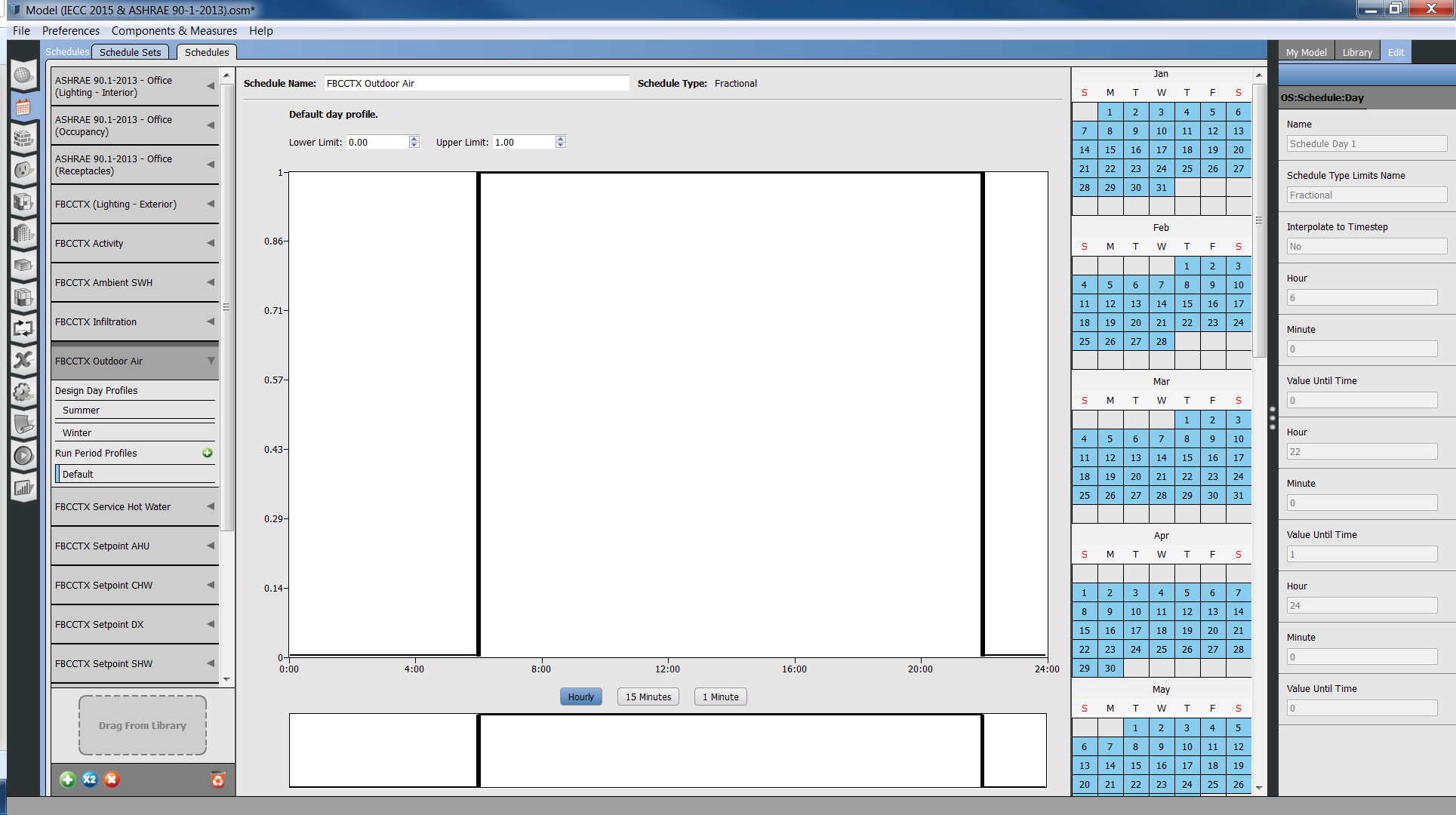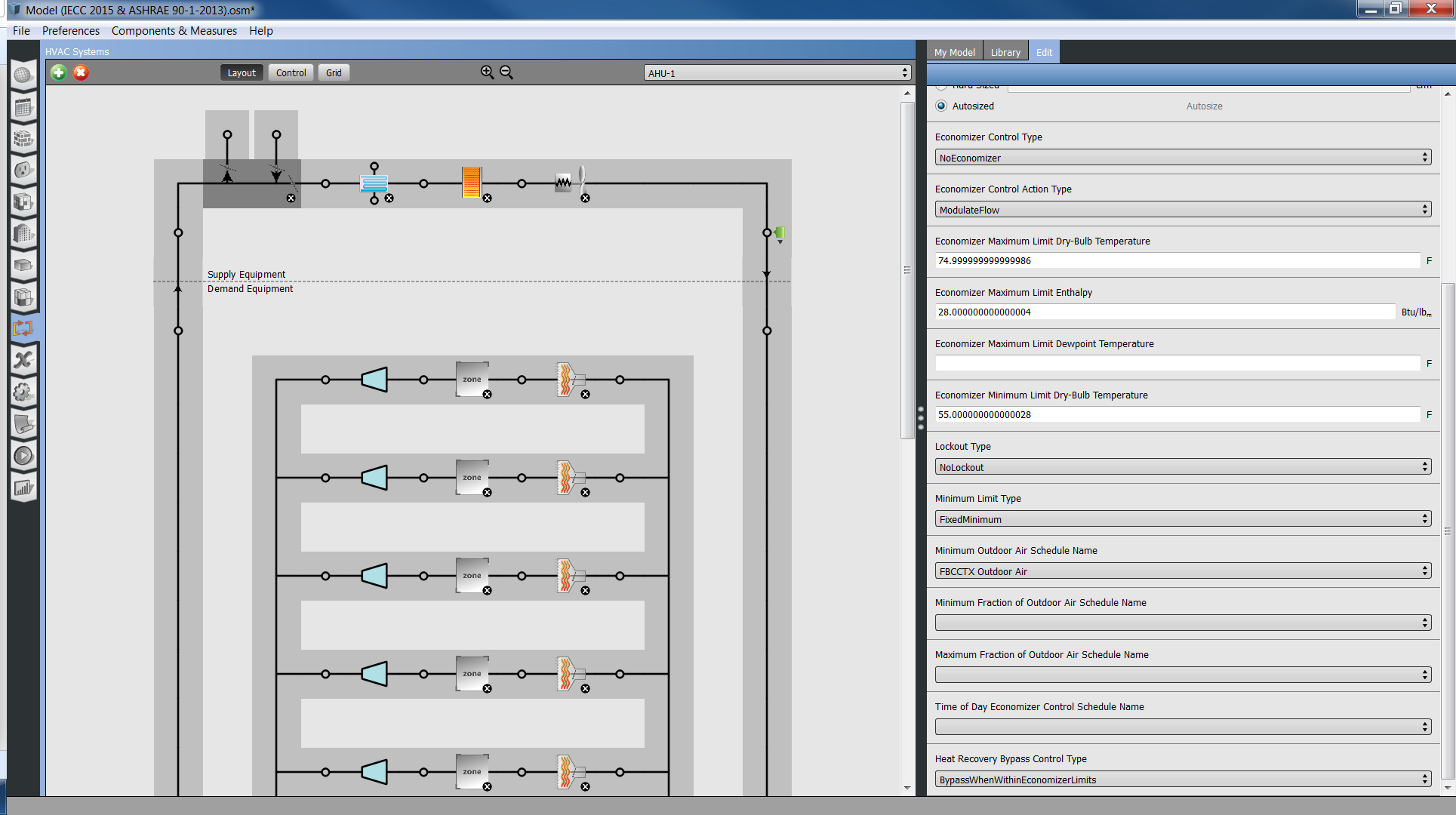high humidity at night from OA?
I am looking at a VAV air loop driven by chilled water cooling coils and electric heating coils. This is in Climate Zone 2A. I noticed that the relative humidity in almost all my zones increases at night to 80% to 90% and then has a hard time coming back down during the day. As a result (I believe), the OpenStudio Results - Zone Conditions report shows more than 6,000 h in excess of 80% RH, while the temperature setpoints are met just fine (80 oF at night, 75 oF during the day).
So, I thought this might be caused by outdoor air being allowed into the building even at night, and I tried to turn it off by creating an Outdoor Air schedule (FBCCTX Outdoor Air) that is 0 at night and 1 during the day, then assigning it to the air loop's outdoor air component (see images below - "Minimum Outdoor Air Schedule Name"). However, I see no change, and the system outside air flow in the EnergyPlus Results Viewer is still not 0 at night.


Is there another trick to turning off outdoor air at night?





What is your HVAC Operational schedule for the air loop, what is the Nightcycle Setting, and are there any schedules on the design specification outdoor air objects in the zones?
Well, that is a great question. I have never actually found a spot to stick a HVAC Operations schedule. Where does one specify that? My individual cooling coil, heating coil and fan are on the "Always On Discrete" availability schedule, as are my VAV reheating coils. As far as nightcycle setting, I presume you are referring to the nighttime setback in the thermostat setpoints? My cooling goes from 75 oF to 80 oF and my heating goes from 68 oF to 60 oF between the ours of 10 PM and 6 AM, and back to 75 oF and 68 oF, respectively from 6 AM to 10 PM.
And finally, the Spaces - Properties - Airflow has Design Specification Outdoor Air Objects for each space, and each object has the same FBCCTX Outdoor Air schedule (not sure how to attach an image here). Anyway, wouldn't the system level FBCCTX Outdoor Air call override any space/zone FBCCTX Outdoor Air call. And if it did not, why do I still see outdoor air at night even though I have this schedule at the space/zone level?
NightCycle is an AvailabilityManager. The default is StayOff. Options include CycleOnAny, CycleOnControlZone, CycleOnZoneFansOnly, etc.
What OpenStudio tab would I find this on? It does not seem to be in the air loop?